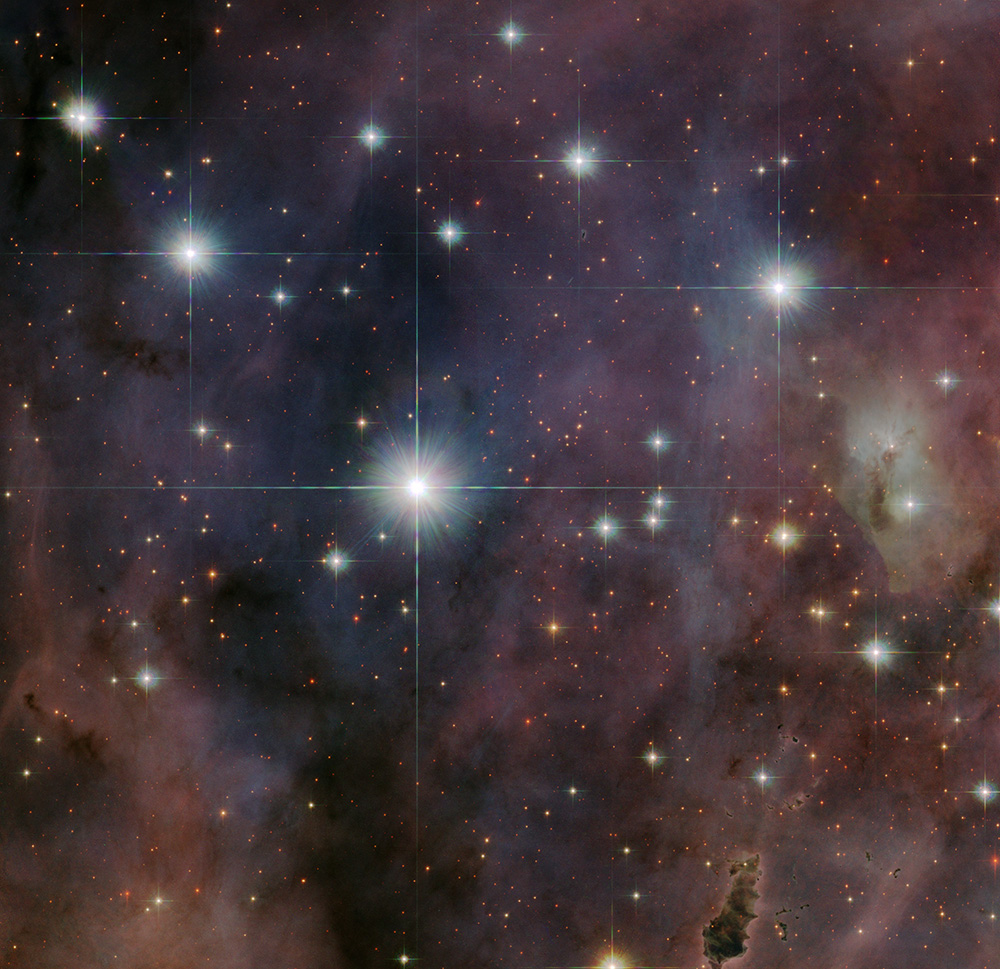
Young Stars in Carina (2014)
I have been poking around at this on and off for the past couple of days. If it wasn’t so lovely, I probably would have given up. Charge bleeds and filter ghosts were frolicking in every corner of the field just trying to ruin my day but I managed to calm them down. If that wasn’t enough, there was also a massive glint and some bizarre marble pattern in the F850LP data I haven’t seen before and am not really sure what it is. In normal speak, there were like a hundred problems with this picture. Definitely not for the faint of heart or a novice processor.
If you look hard enough, you can find this in the vast Carina mosaic but this uses quite a different set of filters and none of them are narrowband. Interesting result. Still, I think an infrared view would be even more interesting. There are thousands of unseen stars shrouded by dust in the nebula. You would hardly recognize it as the same piece of the sky in just infrared.
The target for this image was massive star HD 93250, which is the brightest and slightly off-center star in the picture. Data came from proposal 10602, which was to survey 20 massive O-type stars but I only count 10 in result list. I take the abstract of the proposal to mean that they were looking to see if these particular stars were actually single stars or not. If you want to read about multiplicity without your search being full of results about a Michael Keaton movie, you have to search for “stellar mulitplicity” instead. Haha, at least it’s not assault rifles.
The colors here mean a mix of things. Darker parts are dust or molecular clouds for sure. I want to say the bluer things are reflection while the whitish patch on the right is a combination of emission, reflection, and dust all together. The mouse-shaped cloud at the bottom of the picture is surely surrounded by emission. I’m sure that would be bright red with an H-alpha filter. Redder stars are less likely to be old stars and more likely are obscured by dust… I think! Don’t hold me to that last one.
Red: ACS / WFC F850LP
Green: ACS / WFC F550M
Blue: ACS / WFC F435W
North is NOT up. It is 16.9° clockwise from up.
Copyright information:
Hubble data is public domain, but I put a lot of work into combining it into beautiful color images. The minimal credit line should read: NASA / ESA / J. Schmidt

This work is licensed under a Creative Commons Attribution 3.0 Unported License.


